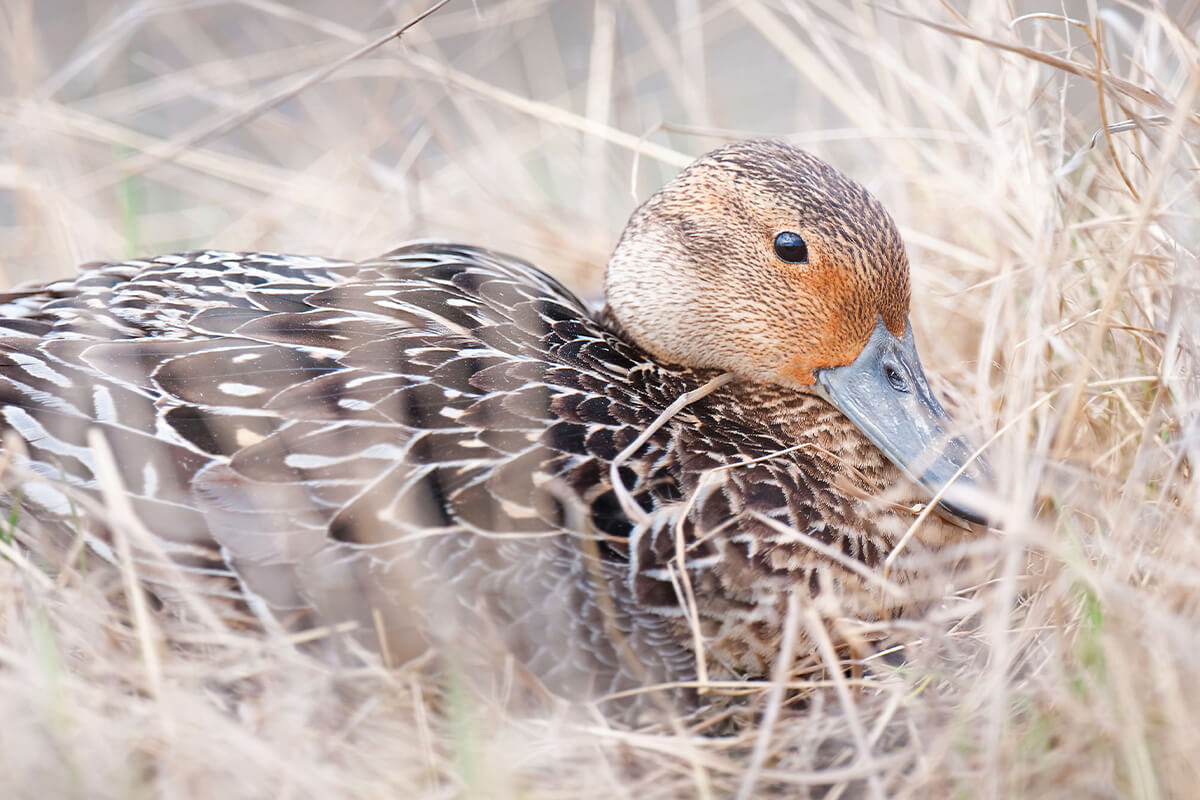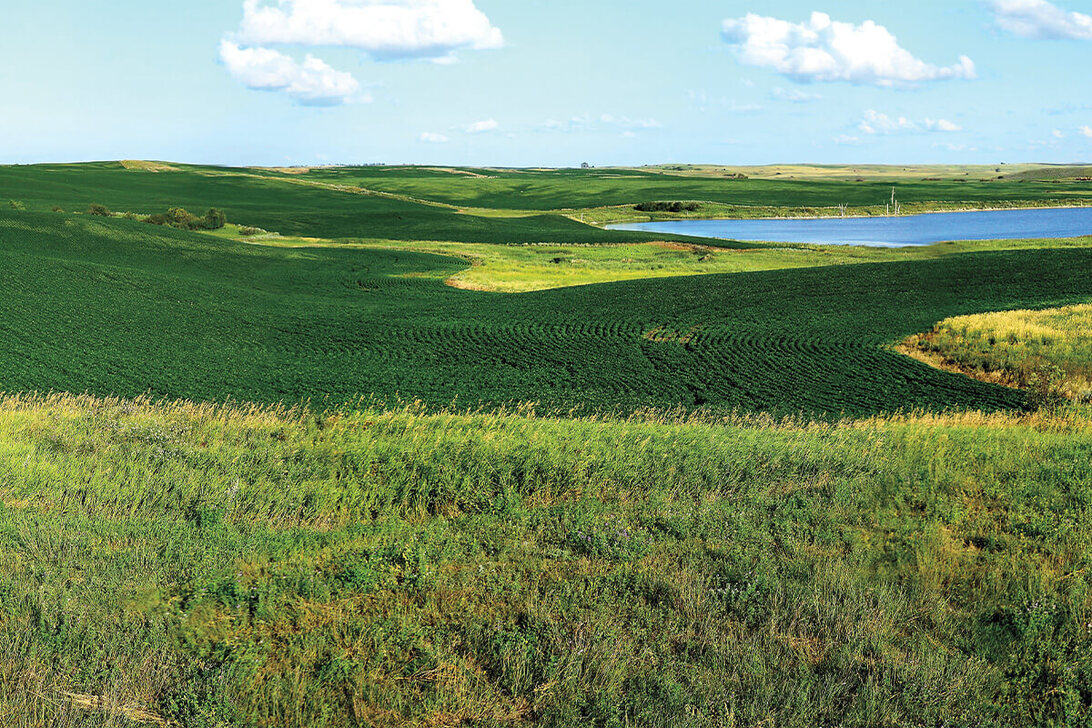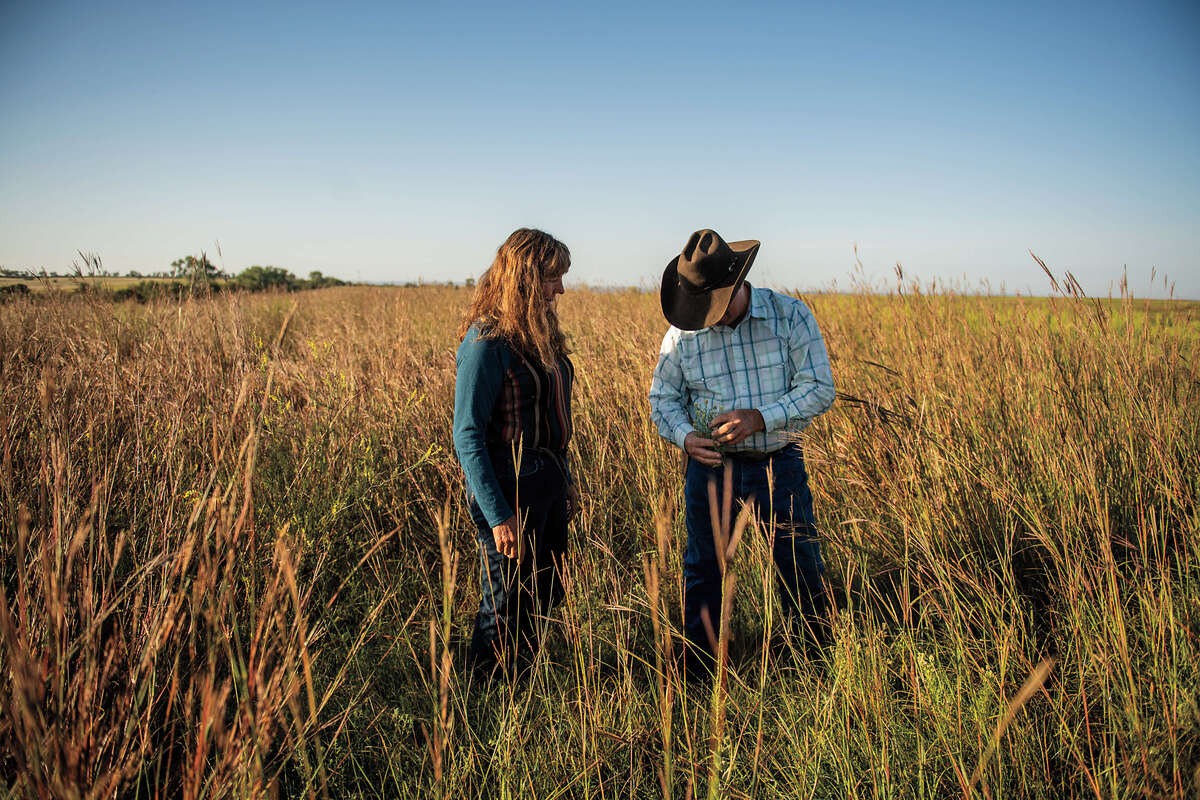The Future of CRP
Building support for this important agricultural conservation program is a top DU priority in the next Farm Bill
Building support for this important agricultural conservation program is a top DU priority in the next Farm Bill

From 10,000 feet in the air, the expanse of grass, wetlands, and cropland that makes up Mike Blaalid’s farming and ranching operation in South Dakota may look like oddly shaped puzzle pieces scattered haphazardly along the James River Valley. On the ground, however, there is a clearly defined plan behind this patchwork, how the pieces come together, and how they directly reflect Blaalid’s approach as a caretaker of the land.
“I have kept my best farm ground in crop production, and on those acres, I am rotating row crops and cover crops and grazing cattle so I can address some of the soil health issues that exist,” Blaalid says. “Where I can on the remaining acres, I have enrolled land in the different options available through the Conservation Reserve Program so I can keep my soil in place, mitigate flooding risks, provide additional grazing areas for my cattle, and keep grass and wetlands on the ground, while also supporting wildlife and giving me and my family and friends a place to hunt.”
Soil and water health, working lands, habitat conservation, and recreation—there may be no better summary of what the Conservation Reserve Program (CRP) has come to mean for agricultural producers, wildlife, and hunters. And as this vital federal program is considered for reauthorization by Congress, those same features will play a prominent role in what it will look like in the future.
CRP was first signed into law in 1985 as a part of the Food Security Act, and every five years, this key component of the conservation title found in what is now known as the Farm Bill must be extended or reauthorized along with the rest of the bill. With the current Farm Bill set to expire later this year, work has already begun to shape the newest version of CRP, which is among the most important agricultural conservation programs ever conceived.

The Conservation Reserve Program benefits grassland-nesting ducks and other bird species that rely on dense cover to hide their nests from predators.
In the years after it first became an option for landowners, CRP became synonymous with wildlife habitat. In return for an annual payment, participating landowners planted grass or trees and restored wetlands on areas of marginal cropland. Populations of big-game animals, upland birds, waterfowl, and many other species of wildlife were quick to respond to the new habitat on the landscape. Grassland-nesting ducks in particular benefited from the expansion of CRP across the Prairie Pothole Region (PPR). Beginning in the early 1990s, a period of abundant moisture across North Dakota and South Dakota boosted the quantity and quality of breeding habitat in the US portion of the PPR, and duck production soared, resulting in some of the largest populations of mallards, gadwalls, blue-winged teal, and other ducks surveyed in the region.
After reaching peak levels in the early 2000s, enrollment in CRP began to decline, and thousands of acres of grassland habitat were removed from the program. Rising commodity prices and noncompetitive rental rates were identified as factors contributing to the precipitous decline, and federal leaders worked with conservation organizations like Ducks Unlimited to find a way to preserve the viability of the program. In addition to addressing financial incentives, options for producers were expanded, with an emphasis on a “working lands” approach. The Grasslands CRP initiative was introduced to allow producers to graze and hay portions of enrolled acres in exchange for a commitment to establish long-term grassland cover. Participating landowners hailed the approach as a key part of their continuing involvement in CRP. Moving forward with the 2023 Farm Bill, flexibility will remain a vital component of this legislation.
“I do not anticipate any large fundamental changes to CRP as we look at this next Farm Bill, but we are committed to finding ways to expand the flexibility within the program because we know it helps incentivize participation,” says Julia Peebles, DU’s manager of agriculture and sustainability policy. “And participation is a primary concern. The question DU is working on answering is, how do we make CRP more desirable for producers?”
Among the solutions being proposed by DU is to prioritize enrollment of those acres where environmental benefits of habitat conservation—improved soil health, water and air quality, and wildlife habitat—work hand in hand with the day-to-day operation of farms and ranches. In addition, DU is working to expand cost-share assistance for fencing, water distribution, and other grazing infrastructure. A focus is also being placed on programs linked to local, state-level environmental priorities, including State Acres for Wildlife Enhancement and the Conservation Reserve Enhancement Program.

CRP and other conservation programs in the Farm Bill help keep producers on the landscape.
“Locally led efforts ensure that CRP can mesh with and support local priorities for enhancing habitat and improving water quality, and it allows states to really tailor program funds to be most beneficial to localized needs,” Peebles says.
As part of DU’s goals for the next Farm Bill, Peebles adds, extra effort will be invested in outreach. “The Farm Bill is a large piece of legislation, and there will be many members of Congress who have never gone through the authorization process before. We will be knocking on doors to help the new members understand just how vital the Farm Bill is not only to conservation but also to the overall sustainability of farming and ranching operations,” Peebles says. “And we will be bringing in producers to share their stories about why it is important to conserve wetlands; why the Farm Bill is important to farmers, ranchers, and other agricultural producers; and why all of this is important for the overall health of the ecosystem and rural communities.”
Another important selling point for CRP is the potential role the program could play in mitigating the impacts of climate change. In 2021, DU was awarded a $3.2 million grant from the US Department of Agriculture to study how wetlands restored through CRP could help sequester carbon and reduce greenhouse gas emissions. The ongoing study will build on existing knowledge of the value of restored wetlands and their ability to sequester carbon five times faster than restored grasslands can while also improving water quality and providing the habitat needed to support continental populations of waterfowl.
“This is a perfect example of how the value of CRP extends far beyond the borders of a particular field,” explains Ryan Taylor, director of public policy at DU’s Great Plains Office in Bismarck, North Dakota. “Still, as an organization dedicated to conserving wetlands and waterfowl, DU recognizes that, in terms of private lands conservation programs, there aren’t many that are more important to the conservation of waterfowl habitat than CRP.”
Taylor adds that there are few programs that capture the human element of conservation like CRP. “For producers, this program may be the tool that helps them meet the conservation goals of their farm or ranch. Land enrolled in CRP can also be the emergency forage source that makes the difference between a ranch surviving or not surviving a catastrophic drought. Keeping producers on the landscape means keeping our working-lands conservation partners in business for future habitat projects and for the good of their rural communities,” Taylor says.
To share your support for CRP and other Farm Bill conservation programs with your elected representatives in Washington, DC, visit ducks.org/conservation/public-policy.
Ducks Unlimited uses cookies to enhance your browsing experience, optimize site functionality, analyze traffic, and deliver personalized advertising through third parties. By continuing to use this site, you agree to our use of cookies. View Privacy Policy